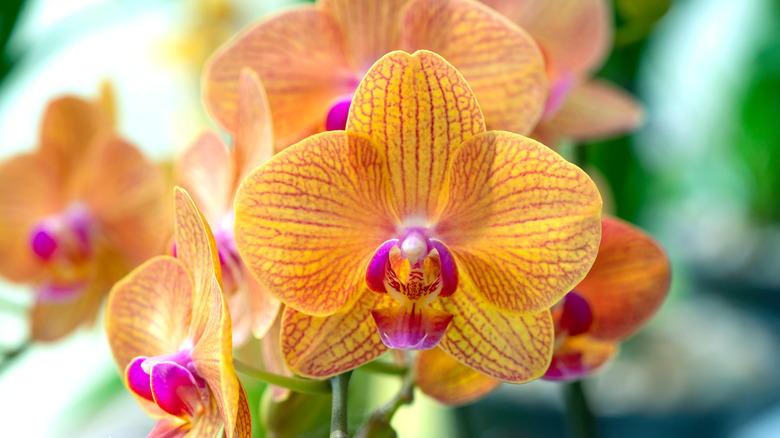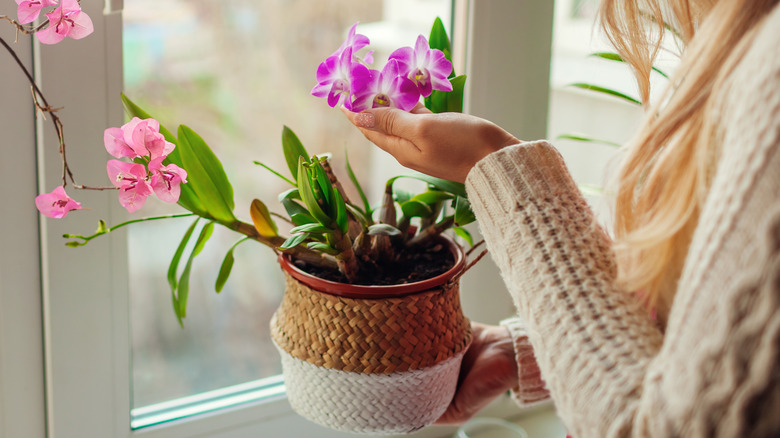You've Been Taking Care Of Your Orchids The Wrong Way All Along
It's hard not to be enchanted by the stately beauty of orchids. Their blooms last for weeks, they're hypoallergenic, and they add a touch of tropical luxury to any space. But if you're worried that your gorgeous phalaenopsis or stunning dendrobium is just going to end up in the compost in a few months, read on to correct common mistakes that even experienced plant parents make with orchids (via The Spruce).
If your strategy with orchids so far has been to just toss them in the bathroom and hope for the best, you're probably not giving your orchids the time and care they need to thrive. Humidity and indirect light are both important for orchids (hence why the bathroom is such a popular spot) but don't forget to monitor the temperature in there to make sure your orchid is warm enough. Leaving the window open to let air into the room while closing the door to the rest of your living space can give your orchid a shock of cold that could cause the blossoms to fall. According to the Ambius Plant Doctor, ideal temperatures for most orchids are 75 degrees Fahrenheit during the day, and 65 degrees Fahrenheit at night. Try moving your orchid to a spot with more consistent temperatures to help it thrive.
Overall, you'll want to choose a spot for your orchid that is consistently warm and has indirect light — try near east- or west-facing windows.
You may want to repot your orchid, but not while it's in bloom
Another key mistake that orchid caretakers make is repotting a plant as soon as it comes home. As noted by The Spruce, this is tricky since most orchids are sold in potting situations that are less than ideal, where roots are crowded and drainage is sparse. But most orchids are also sold when in bloom and the stress of repotting is often too much for a flowering plant to handle, so it's best to be patient.
While in bloom, an orchid only needs to be watered about every two weeks — especially if its current pot offers insufficient drainage. Underwatering is always better than overwatering. To water an orchid, place the potted orchid (ideally in just its plastic grower sleeve, not the whole pot) under a stream of tepid tap water for a few seconds. Wait for the water to drain through and only replace the plant once it's no longer dripping. Avoid getting the leaves or flowers wet (via American Orchid Society). Misting is another watering option that more accurately mimics orchid's jungle habitat, but that without good airflow, you may just be inviting fungus (via Smart Garden Guide).
Per FTD, after the bloom is done, help your orchid recover with a balanced houseplant fertilizer, a stem trim, and a nice new pot with plenty of breathing room for its roots. In six to nine months you may be rewarded with a brand-new stem of breathtaking blooms.

